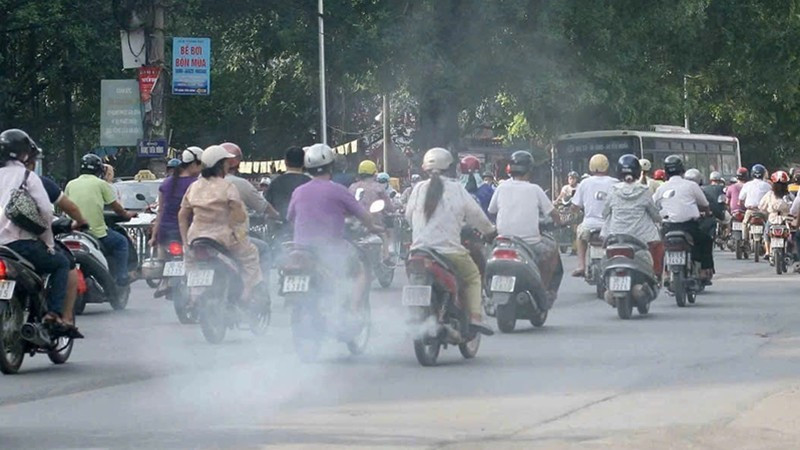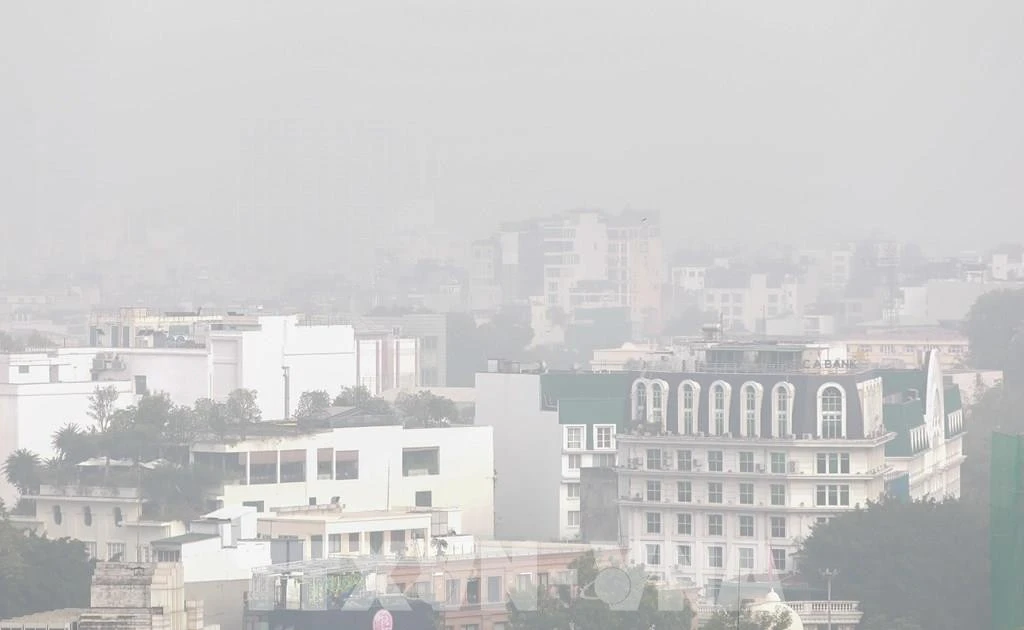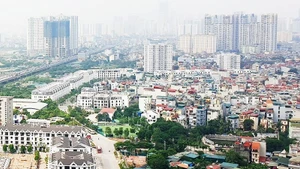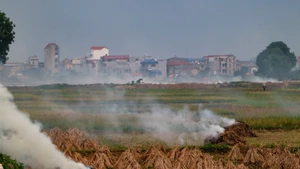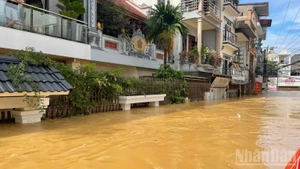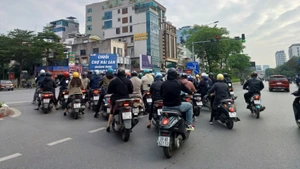According to the draft plan, Ha Noi and Ho Chi Minh City will pilot motorbike emissions control starting in 2027. These two cities most clearly exemplify the challenges of air pollution caused by transportation, improper motorbike use, and the public’s heavy reliance on these vehicles.
Control based on year of manufacture
Under the draft, emissions testing for motorbikes will initially be rolled out in Ha Noi and Ho Chi Minh City beginning in January 2027. From January 2028, the policy will extend to Hai Phong, Da Nang, Can Tho and Hue. By January 2030, it will apply nationwide.
Motorbikes will be categorised by age for emissions control: those manufactured before 2008 will fall under Level 1; those produced between 2008 and 2016 under Level 2; and those from 2017 to 30 June 2026 under Level 3. For vehicles produced from 1 July 2026 onwards, Level 4 will apply.
The draft stipulates that from 2032, all motorbikes operating in Ha Noi and Ho Chi Minh City must meet at least Level 2 emissions standards. In Ha Noi, motorbikes entering designated “low-emission zones” will be required to meet additional criteria set by the municipal government.
Currently, there are around 70 million motorbikes in Viet Nam, making them the dominant mode of transport—and the largest source of pollutant emissions. Emissions from traffic contain hazardous substances such as CO₂, NO₂, and SO₂, which can cause cancer or irritation; some toxins can even enter the bloodstream, seriously harming human health.
According to the Ministry of Agriculture and Environment, the roadmap aims to control and reduce air pollution. It also provides a legal basis to phase out non-compliant vehicles, promote a shift to cleaner, more environmentally friendly transport, and fulfil Viet Nam’s international commitments to reduce greenhouse gas emissions and address climate change.
Explaining the early rollout in Ha Noi and Ho Chi Minh City, Associate Professor Vu Thanh Ca from the University of Natural Resources and Environment noted that air pollution in these cities is severe due to the sheer volume and emissions of motorbikes.
Data from vehicle registration agencies show that Ha Noi has about 7 million motorbikes, and Ho Chi Minh City nearly 8 million—not including many others registered elsewhere but operating in these areas. Approximately 70% of these vehicles are more than 10 years old.
Each year, motorbikes in these two cities emit roughly 300,000 tonnes of CO, 25,000 tonnes of hydrocarbons, and tens of thousands of tonnes of dust and fine particulate matter. Ha Noi consistently ranks among the most polluted cities globally.
Vu Thanh Ca added that other cities, with lower population and vehicle densities or located near coastlines, benefit from natural air exchange between land and sea, which quickly disperses pollution. Therefore, imposing stringent emissions standards in those areas is not yet necessary.
The draft requirement for motorbikes in Ha Noi’s “low-emission zones” to comply with standards proposed by the city council is deemed necessary to address the city’s pollution. In Ha Noi, severe air pollution tends to occur during periods of calm winds and temperature inversions—typically in late autumn, winter, or early spring.
Under such weather conditions, exhaust and fine particles accumulate near ground level, often causing pollution levels to far exceed safe limits.
Not a ban, but an incentive to comply
To date, emissions control in Viet Nam has only applied to newly manufactured, assembled or imported motorbikes. This draft policy marks the first attempt to regulate emissions from vehicles already in use.
From a social policy standpoint, this approach is considered flexible. It does not impose an outright ban on older motorbikes, but rather focuses on inspection and maintenance. This allows people to continue using their vehicles if they meet the required standards, avoiding economic hardship for low-income groups.
According to Associate Professor Nguyen The Luong from the Ha Noi University of Science and Technology, emissions-related maintenance—such as adjusting the air screw, changing engine oil, spark plugs, and air filters—costs about 300,000 VND (roughly USD 11.50), making it affordable for most. However, targeted support policies are still needed for low-income individuals.
Experts point out that countries such as China, Taiwan (China), Thailand, India, and Indonesia already conduct periodic motorbike emissions testing. Vehicles that fail to meet CO and HC standards must be repaired, have parts replaced, or be withdrawn from use. Compared to these countries, Viet Nam’s proposed standards are stricter, reflecting the country's much higher density of motorbikes and their significant environmental impact.
According to Dinh Trong Khang from the Institute of Transport Science and Technology, one major reason for the high emissions is that regulations on new and imported vehicles only began in 2007—at Euro 2 standards—about 15 to 20 years behind many other countries.
As a result, most motorbikes on the road today are technologically outdated, often using carburettors and lacking essential emissions control systems such as secondary air injection, electronic fuel injection, petrol vapour recovery, or catalytic converters. More worryingly, aside from initial registration, motorbikes are not subject to any ongoing regulatory oversight and are rarely maintained or serviced properly.
In practice, vehicle maintenance is not tied to emissions checks, so owners may not be aware if their motorbikes are polluting. Likewise, mechanics often lack the knowledge or tools to verify whether repairs effectively reduce emissions, as there are no standardised testing techniques or benchmarks available.
Although regulating motorbike emissions is a sound policy, its implementation will likely face challenges. One key obstacle is public concern—and even opposition—particularly from low-income individuals who rely on old motorbikes.
Experts suggest that lessons from Taiwan (China) show that initial public opposition to emissions regulations gradually turned into strong support once environmental improvements became apparent.
Therefore, raising public awareness is critical. Campaigns should educate people on the health hazards of emissions and stress individual responsibility for environmental protection. Once the public understands the rationale behind emissions control, broader support for the policy is likely to follow.
